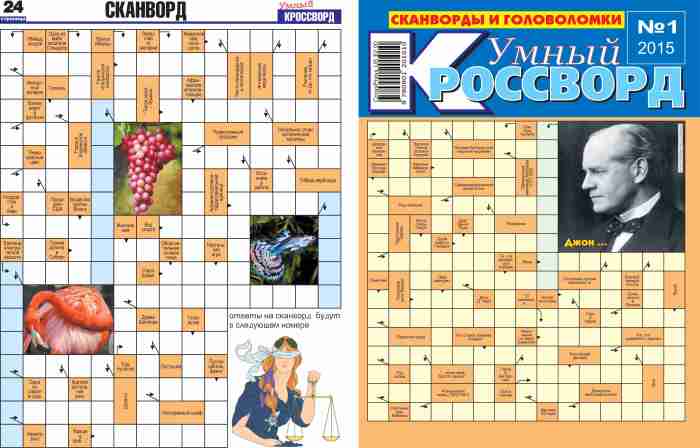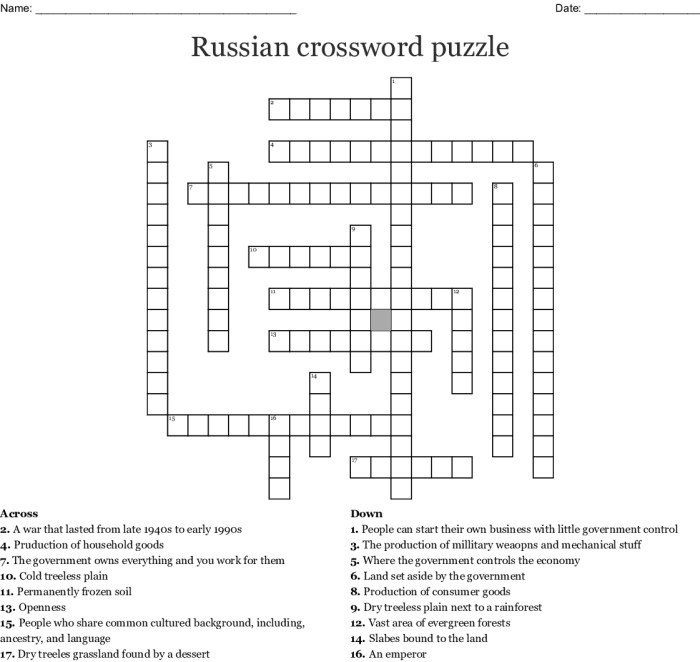Of a russian region crossword – Embark on an enthralling expedition with the Russian Region Crossword, a captivating puzzle that unveils the rich tapestry of Russia’s diverse regions. From the annals of history to the vibrant cultural heritage and the vast geographical expanse, this crossword invites you to decipher the intricate mosaic that makes up the Russian Federation.
As you navigate through the crossword’s intricate grid, you’ll encounter clues that delve into the historical evolution of Russian regions, the geographical diversity that shapes their identities, and the economic profiles that drive their development. The cultural heritage of each region, with its unique traditions, folklore, and artistic expressions, will captivate your imagination.
Historical Context of Russian Regions: Of A Russian Region Crossword

Russian regions, known as “oblasts” or “republics,” have a rich and diverse history that has shaped their boundaries and characteristics. The formation and evolution of these regions can be traced back to the Kievan Rus’ period in the 9th century.
Throughout history, various factors have influenced the development of Russian regions, including:
Administrative Divisions, Of a russian region crossword
- From the 12th to 15th centuries, Russia was divided into principalities, each ruled by a prince.
- In the 16th century, Ivan the Terrible introduced a system of “uyezds” and “volosts,” which became the basis for later administrative divisions.
- Peter the Great further reformed the administrative structure, creating provinces and governorates.
Geographical Features
- Russia’s vast size and diverse geography have contributed to the formation of distinct regions.
- Natural boundaries, such as rivers, mountains, and forests, have influenced the development of regional identities.
- The Ural Mountains, for example, have historically separated European Russia from Siberia.
Cultural and Ethnic Diversity
- Russia is home to a diverse population with different ethnic groups and cultural traditions.
- The formation of regions has often been influenced by the settlement patterns and cultural characteristics of these groups.
- For example, the Volga-Ural region is known for its Tatar and Bashkir populations, while the North Caucasus is home to a variety of ethnic groups.
Geographical Diversity of Russian Regions
The vast expanse of Russia encompasses a stunning array of geographical features, from towering mountain ranges to sprawling plains, from icy tundra to subtropical shores. This geographical diversity has played a pivotal role in shaping the cultural, economic, and social development of Russia’s regions.
Mountainous Regions
The Caucasus Mountains in the south and the Ural Mountains in the east form formidable barriers that have influenced the movement of people and goods for centuries. These regions are home to diverse ethnic groups and unique cultural traditions, shaped by the challenges and opportunities presented by their mountainous landscapes.
The rugged terrain has fostered a strong sense of independence and resilience among the local populations. In the Caucasus, for example, the mountain villages have a long history of self-governance and fierce resistance to external rule.
Plains and Steppes
The vast plains and steppes of Russia’s central and southern regions have provided ample space for agriculture and nomadic pastoralism. The fertile soils and temperate climate have supported large-scale farming, contributing to Russia’s status as a major global exporter of grain.
The open landscapes of the plains have also influenced the cultural and social life of the people. The traditional Cossack culture, with its emphasis on horsemanship and military prowess, developed in the steppe regions.
Coastal Regions
Russia’s extensive coastline along the Arctic, Pacific, and Baltic Seas has provided access to important trade routes and strategic military positions. The northern ports of Murmansk and Arkhangelsk serve as vital gateways to the Arctic, while the southern port of Novorossiysk is a major hub for trade with the Black Sea and Mediterranean regions.
The coastal regions have also been shaped by their unique marine ecosystems. The Arctic waters support a rich diversity of marine life, while the Black Sea coast is known for its subtropical climate and tourism industry.
Economic Profiles of Russian Regions
The Russian Federation is a vast and diverse country, with regions exhibiting distinct economic profiles. Understanding these profiles is crucial for assessing the strengths and challenges of the Russian economy as a whole.
The economic landscape of Russian regions is shaped by a combination of factors, including natural resources, industrial development, and geographical location. Some regions are heavily dependent on natural resources, such as oil and gas, while others have developed strong industrial bases or thriving service sectors.
Industrial Sector
Russia’s industrial sector is concentrated in a few key regions, including the Moscow region, the Ural region, and the Siberian region. These regions are home to major industrial hubs, such as Moscow, Yekaterinburg, and Novosibirsk, which produce a wide range of goods, including machinery, vehicles, and chemicals.
However, the industrial sector in many Russian regions faces challenges, including outdated infrastructure, a lack of skilled labor, and competition from foreign imports. As a result, some regions have experienced deindustrialization and economic decline.
Agricultural Sector
Russia has a large and diverse agricultural sector, with a wide range of climatic zones and soil types. The main agricultural regions are located in the southern and central parts of the country, including the Krasnodar region, the Rostov region, and the Belgorod region.
These regions produce a variety of crops, including wheat, corn, and sunflowers, as well as livestock and dairy products.
However, the agricultural sector in many Russian regions faces challenges, including low productivity, a lack of investment, and competition from foreign imports. As a result, some regions have experienced a decline in agricultural output and rural depopulation.
Service Sector
The service sector is a growing part of the Russian economy, particularly in large cities such as Moscow and St. Petersburg. The service sector includes a wide range of industries, such as finance, healthcare, education, and tourism. These industries are often knowledge-intensive and require a highly skilled workforce.
However, the service sector in many Russian regions faces challenges, including a lack of infrastructure, a shortage of qualified workers, and competition from foreign companies. As a result, some regions have experienced a slower growth in the service sector compared to more developed regions.
Of a russian region crossword, you might want to check how to cite the american yawp to see if you can find some good information there. It’s a pretty comprehensive guide that should help you out. Anyway, back to the crossword puzzle of a russian region.
Cultural Heritage of Russian Regions

The cultural heritage of Russian regions is a diverse tapestry of traditions, folklore, and artistic expressions that reflect the rich history and cultural influences of each region. From the vibrant folk art of the northern regions to the cosmopolitan influences of the major cities, Russian regions offer a glimpse into the cultural diversity of the country.
Each region has its unique traditions and customs, shaped by its geographical location, historical events, and ethnic makeup. These traditions are often reflected in the region’s folklore, music, dance, and crafts.
Folklore and Oral Traditions
Russian folklore is a rich and diverse tradition that has been passed down through generations. It includes fairy tales, legends, epics, and songs that reflect the beliefs, values, and experiences of the Russian people.
- Byliny: Epic poems that tell the tales of legendary heroes and historical events.
- Skazki: Fairy tales that often feature magical creatures and teach moral lessons.
- Chastushki: Short, humorous songs that often poke fun at everyday life.
Administrative Structure of Russian Regions

Russia is a vast country with a complex administrative structure. The country is divided into 85 regions, each with its own government and legislature. The regions are further divided into districts, which are then divided into municipalities.
The regional governments are responsible for a wide range of issues, including education, healthcare, and transportation. They also have the power to levy taxes and issue regulations.
Relationship with the Federal Government
The federal government has a strong influence over the regions. The president of Russia appoints the governors of each region, and the federal government can override regional laws. However, the regions also have a degree of autonomy. They can make their own laws and set their own tax rates.
Demographic Trends in Russian Regions

Russian regions exhibit diverse demographic trends influenced by various factors. Understanding these trends is crucial for policymaking and regional development.
Factors influencing population growth include birth rates, death rates, and migration patterns. Migration within Russia and international migration significantly impact regional demographics. Age distribution also plays a vital role, as regions with a higher proportion of elderly residents may face challenges in labor force participation and healthcare.
Population Growth
- Some regions, such as Moscow and Saint Petersburg, experience positive population growth due to migration and economic opportunities.
- Other regions, particularly in rural areas, face population decline due to low birth rates, outmigration, and an aging population.
Migration Patterns
- Internal migration from rural to urban areas has been a significant trend in Russia, contributing to population growth in major cities.
- International migration also plays a role, with some regions attracting foreign workers and skilled immigrants.
Age Distribution
- Russia’s population is aging, with a growing proportion of elderly residents. This trend is more pronounced in rural areas.
- Regions with a higher proportion of elderly residents may experience challenges in healthcare, pension systems, and labor force participation.
Challenges and Opportunities for Russian Regions

Russian regions face a range of challenges and opportunities in the 21st century. These include economic disparities, infrastructure gaps, and demographic shifts. However, there are also opportunities for growth, social development, and cultural preservation.
Economic Challenges and Opportunities
Many Russian regions struggle with economic disparities. Some regions are highly industrialized and wealthy, while others rely on agriculture or natural resources and have lower incomes. This can lead to regional imbalances and social tensions.
However, there are also opportunities for economic growth in Russian regions. The government is investing in infrastructure projects, such as roads, railways, and airports. This investment is expected to boost economic activity and create jobs.
Social Challenges and Opportunities
Russian regions also face a number of social challenges. These include poverty, inequality, and a lack of access to education and healthcare. These challenges can lead to social unrest and instability.
However, there are also opportunities for social development in Russian regions. The government is implementing a number of social programs, such as housing assistance, healthcare reform, and education reform. These programs are designed to improve the lives of Russians and reduce social disparities.
Cultural Challenges and Opportunities
Russian regions have a rich cultural heritage. However, this heritage is under threat from globalization and modernization. These forces can lead to the loss of traditional languages, customs, and beliefs.
However, there are also opportunities for cultural preservation in Russian regions. The government is supporting efforts to preserve traditional cultures and languages. These efforts include the establishment of cultural centers, the teaching of traditional languages in schools, and the promotion of traditional arts and crafts.
General Inquiries
What is the historical significance of Russian regions?
Russian regions have played a pivotal role in shaping the country’s history, serving as centers of political power, cultural innovation, and economic development.
How does geography influence the development of Russian regions?
Geography has profoundly impacted Russian regions, determining their economic activities, cultural traditions, and social structures. The vast expanse, diverse landscapes, and access to natural resources have all shaped the unique characteristics of each region.
What are the key economic challenges facing Russian regions?
Russian regions face challenges such as economic disparities, dependence on natural resources, and infrastructure development. However, they also possess significant potential for growth in sectors such as tourism, agriculture, and manufacturing.